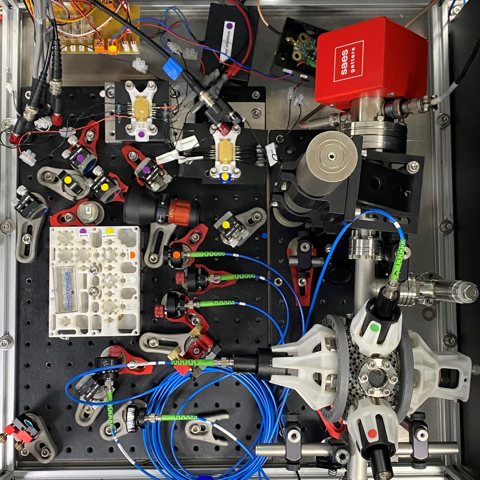3D-Printed Components for Cold Atoms
Somaya Madkhaly of the University of Nottingham, UK, and her colleagues are on a mission to build compact equipment for quantum technologies. Ideally, such devices will be small, lightweight, and robust so that they could be used anywhere, anytime—unlike current lab-based systems, which are far from being portable. The team recently demonstrated a 3D-printed vacuum chamber that is 70% lighter than a standard vacuum chamber, something that they say could help reduce the size and weight of systems that use such chambers. Now they have used 3D-printed parts to demonstrate a compact magneto-optical trap—the starting point for many quantum technologies as well as cold-atom experiments [1].
The team’s design includes the trap’s optics components and vacuum chamber. The printed parts weigh 3.2 kg and occupy a space of 0.15m3, a tiny fraction of the ∼3m3 normally required for such a system.
To demonstrate their setup, the team used it to confine and cool a cloud of rubidium atoms, which are commonly used in cold-atom experiments. They show that they could produce a cloud of 2×108 of these atoms, around the same number contained in clouds using traditional, heavier components.
Madkhaly imagines that their “plug-and-play” 3D-printed components could be used in other optics- or vacuum-based systems needed for quantum technologies. But for now, she says, they plan to optimize their magneto-optical trap designs so that they can create cold-atom clouds with higher-than-normal numbers of atoms. The purpose of this goal is to get to a regime where quantum gravity effects become detectable.
–Katherine Wright
Katherine Wright is the Deputy Editor of Physics Magazine.
References
- S. H. Madkhaly et al., “Performance-optimized components for quantum technologies via additive manufacturing,” PRX Quantum 2, 030326 (2021).





